Dell
Dell UltraSharp UP3218K: the first 8K UHD monitor
Aprox. 4277€ - see price -
See specificationsThe Dell UltraSharp UP3218K monitor is the first 8K Ultra HD monitor on the market. It arouses curiosity, but also some questions as to the interest of such a definition on a screen of only 32 inches. This is an opportunity to answer questions.
Positive points
Impressive 8K definition ...
Image quality in sRGB mode.
Exemplary ergonomics.
USB 3.0 hub.
Open viewing angles.
Bad points
... but to the interest for the moment restricted.
No USB ports on the side.
Limited connectivity.
Our review
Presentation
The Dell UltraSharp UP3218K monitor has a 32-inch (≈82 cm) IPS panel displaying an 8K Ultra HD definition of 7,680 x 4,320 px at 60 Hz. It uses an Edge Led backlight system using a single led bar located at the base of the slab. This monitor displays a trifle of 33.2 MP, four times more than an Ultra HD monitor (8.3 Mpx), and the resolution thus reaches 275 dpi.
The UltraSharp UP3218K monitor does not really have a direct competitor on the market, which allows Dell to market it around 5,000 €.
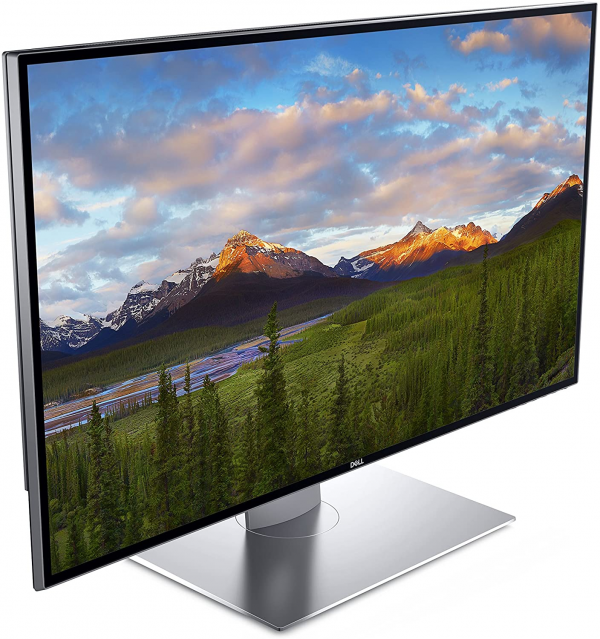
Ergonomics
No frills in terms of design: it is still very classic at Dell. The materials chosen are of quality and the finishes are exemplary, as always or almost on the manufacturer's UltraSharp range.
This monitor offers all possible settings: height adjustment of 12 cm, tilt from -5 to + 21 °, rotation of +/- 45 ° and a pivot to switch to portrait mode.
Regarding the connectivity, the Dell UP3218K is content with two DisplayPort inputs used simultaneously to display an 8K Ultra HD image of 7,680 x 4,320 px. There are also four USB 3.0 ports and a mini-jack audio output. There are no built-in speakers. We would have liked HDMI inputs so that we could display multiple Ultra HD sources at the same time.
Like many manufacturers, Dell chose a series of buttons placed on the bottom edge to make the adjustments. The menus are clear, but the placement of the buttons always requires real cerebral gymnastics to access the different settings. We always prefer the joystick from Asus, Philips or AOC, which is much more intuitive.
Dell opted for a glossy coating, which is rather surprising for a monitor intended for professionals. The anti-reflective treatment is not very effective and it will be necessary to choose the position of the monitor in the room.
8K panel requires, the backlight must be very powerful to get through this very dense pixel wall. The consumption is thus much higher than that noted on the other monitors: 54 W on our test chart with a white calibrated at 150 cd / m². The relative consumption reaches 191 W / m². It's very high, especially compared to the other monitors in our comparison, the average of which is 100 W / m², but it's less than that of the Dell UP2718Q (the first HDR monitor with a full LED backlight system composed 384 diodes), raised to 219 W / m².
In native definition, the time display in Windows is not even the width of the power button. In other words, it's tiny, but perfectly legible as long as you take the trouble to stand 10 cm from the screen. To use this monitor correctly, you must set the Windows scale to 250%. For the moment, there is no real use except for image professionals (see box).
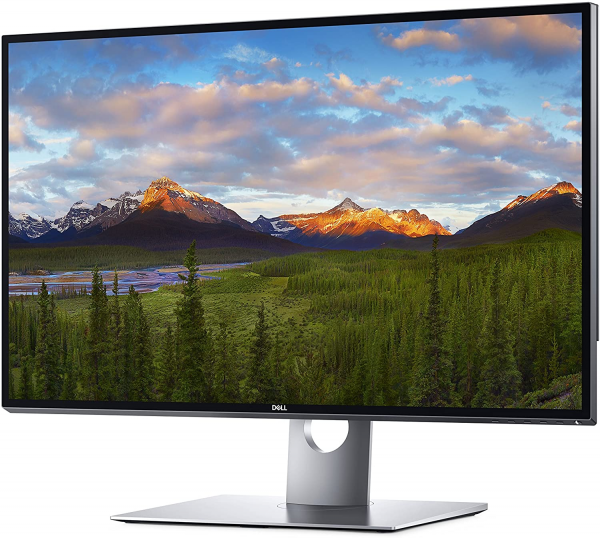
Colors and contrast
Default: average gray temperature: 7,100 K.
Default: gamma curve at 1.9.
Default: Delta E average at 5.8.
The Standard mode on which the monitor is set at the factory is not really flattering. The temperature, too high, has an average of 7,100 K instead of the expected 6,500 K. The mean of the gamma is too low (1.9) with an unstable curve far from the reference 2.2. Finally, with an average delta E at 5.8, the colors are far from fidelity.
Manual adjustment: average gray temperature: 7,050 K.
Manual adjustment: gamma curve at 2.2.
Manual setting: average delta E at 1.4.
Fortunately, the sRGB mode is a game-changer. The monitor is then much better calibrated. The temperature curve (7,050 K) remains slightly above the target average, but gains in stability. The gamma curve becomes almost stable with a perfect average of 2.2 and the colors are excellent: the average delta E is established at 1.4 and, above all, no shade exceeds 3, threshold beyond which the human eye can perceive color drift.
Calibrated: average gray temperature: 6 510 K.
Calibrated: gamma curve at 2.2.
Calibrated: average delta E at 0.8.
Finally, calibrating the monitor with a colorimetric profile makes it possible to smooth the temperature curve, this time obtaining a value of 6 510 K, stable over the entire spectrum. Again, the gamma curve is perfectly stable and aligned with the reference one. Finally, the colors are still a little more accurate, with a delta E less than 1 (0.8). You can download this color profile by following this link.
The Dell UltraSharp UP3218K monitor is equipped with an IPS panel providing a contrast of 1180: 1, good enough for IPS technology. However, it is nowhere near as good as the best VA screens, like the Textorm TX32 or the Philips BDM4037UW, which exceed a contrast of 4,000: 1. In return, the viewing angles are better.
The average difference in uniformity is measured at only 8% over the entire 32-inch panel and we did not find any light leaks or clouding.
The photo of the sub-pixels under the electron microscope confirms that it is indeed an IPS panel. The sub-pixels are very close together and thus make it possible to display a resolution of 275 pixels per inch.
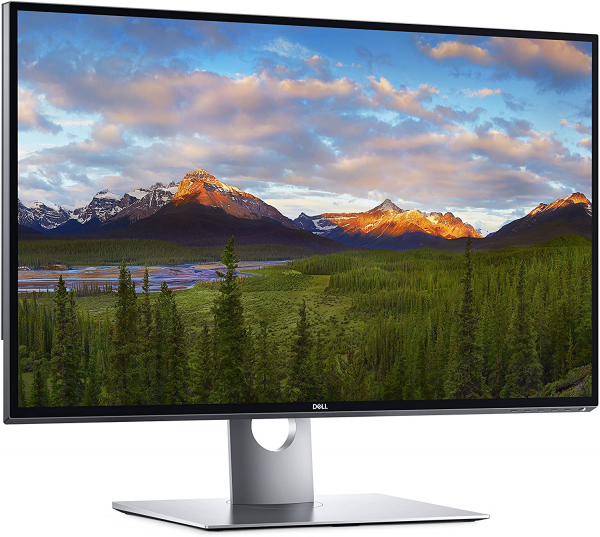
Reactivity
The Dell UP3218K does not use Pulse Width Modulation (PWM) to adjust the brightness. It therefore does not flicker and does not cause headaches or eye problems in sensitive people.
By default, the remanence time measured at 10 ms is good enough for an IPS panel. This monitor should therefore not appeal to players looking for high responsiveness, but it will be suitable for all other uses, whether movies, office automation or even casual or solo play. The monitor offers two settings for the overdrive: normal or fast, which does not make drastic changes.
Finally, we measured the display delay at only 10 ms. There is thus no lag between the action and its repercussion on the screen.
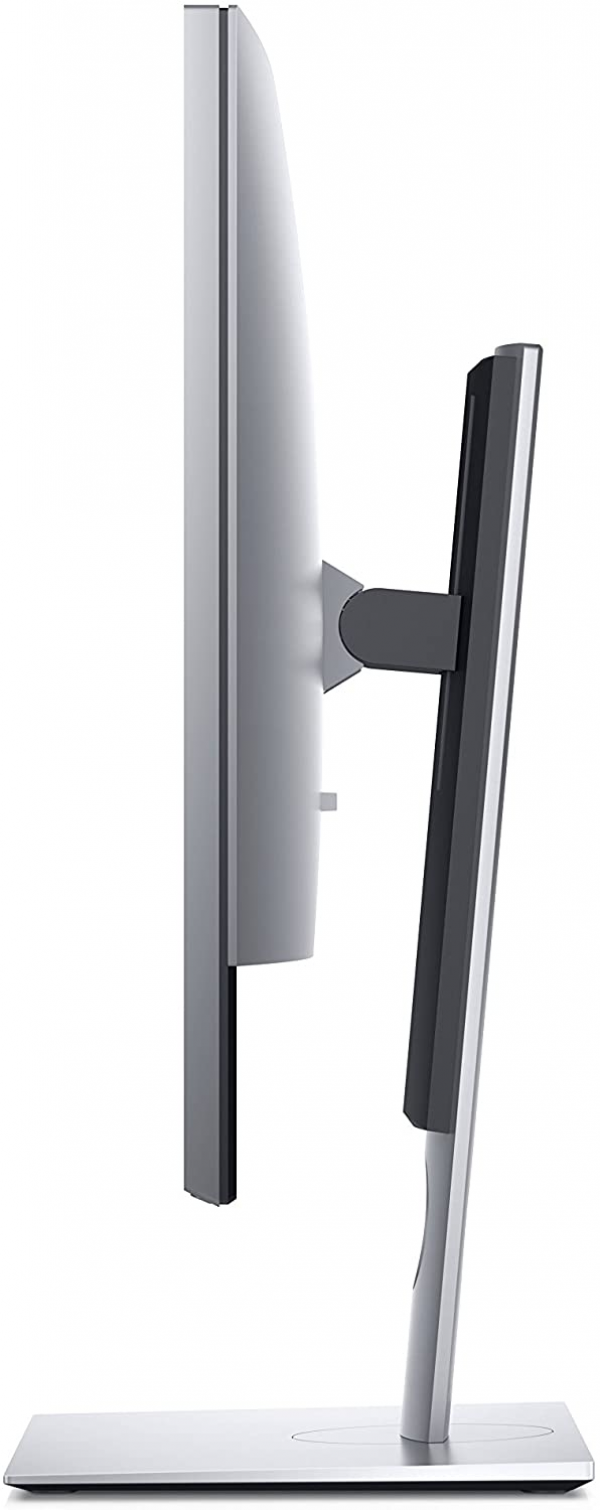
Conclusion
Dell renews the qualities of its monitors, including exemplary ergonomics and impeccable finish, and adds a fairly well calibrated IPS 8K panel never seen before. On the monitor market, it is a real UFO that targets a niche market: 4K editing enthusiasts and photographers looking for very high resolution.
Specifications
Reviews

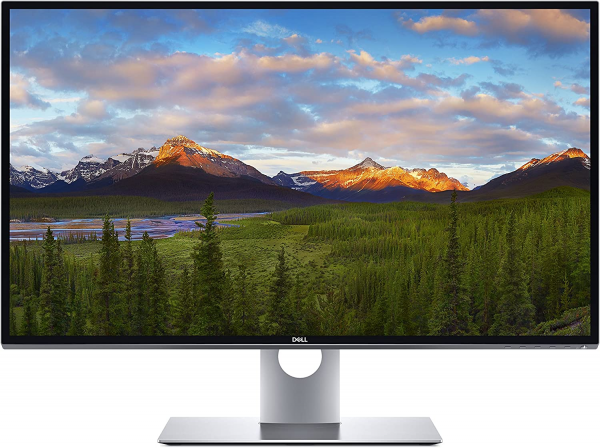
they accept kidneys as payments
I wanted to buy this but unfortunately I am a broke college student, apparently they accepted kidneys as payments so I took matters into my own hands (or my kidneys) so I kinda needed 2 kidneys but who needs kidneys anyways, this monitor is so smooth I cant even feel my body slowly dyi
Perfect except for burn-in
As I type this on my Dell 8K display, I feel like I am seeing into the future. That feeling has been consistent from day one. I was one of the first consumer recipients of this monitor after pre-ordering it from Dell in early 2017. I have been almost completely satisfied, including with Dell customer support, during this period.
I use the display on my Linux workstation with Nvidia video cards and drivers. It worked out of the box on the first try, although an Nvidia driver issue requires me to reset the resolution often. The monitor itself has truly stunning picture quality, with razor-sharp text, extremely vivid colors, deep blacks, and high contrast and brightness. I want to use it for hours on end, and that's one of the only problems: you can't. Windows get burned in, with a bright pink afterglow, after only a couple hours of use. I had my monitor replaced under warranty (easy process), and the new panel had the same problem. So this is a design flaw in what is otherwise my platonic ideal monitor.
This is a new set of capabilities that any graphics fan would appreciate. They keep lowering the price as well; trust me, it's worth the money.
Perfection incarnate
At first I was skeptical of the whole "8k" idea, with 4k being relatively new and all. But lo and behold, boy was I wrong! After I bought my first one, I decided to buy three other monitors to mount on my setup. Now I can watch Shrek in 8k in four different parts in my home! Although I wish I could get another one, but I had to buy my eighteenth Ferrari and I was just $ 100,000 too short and I was barely able to buy my second aqua / land convertible yacht. My maid loves it and so does my dog Rupert. Rate 10/10, but a solid 9/10 for the fact that it isn't Bluetooth compatible with my ramen Bugatti hybrid.
Changed my life
Amazing resolution! As an adult film bulletin I find myself frequently lusting for greater quality in my depraved binge sessions. After turning tricks I found this to be quite affordable! It's worth the positive result from the clinic!
Great monitor, but price
It's a great monitor, but the price is too high ... I bough it for $ 4,000 but most likely the price will soon drop all the way bellow $ 1k